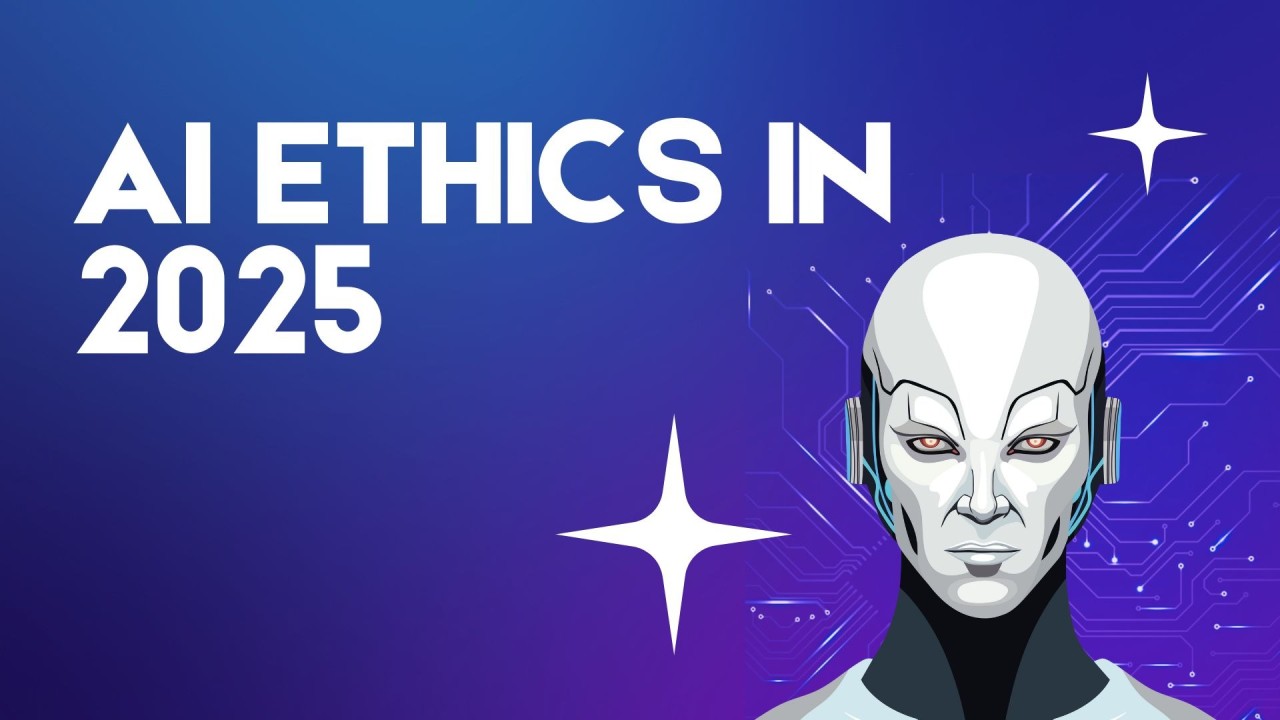Building Trustworthy AI in 2025: Why Ethics and Responsible Development Matter
As we venture into 2025, artificial intelligence (AI) permeates every facet of our lives, from healthcare to finance. This ubiquity comes with a significant responsibility to ensure AI systems are *trustworthy*, *ethical*, and developed with a keen sense of responsibility. The essence of building public trust in AI systems lies at the intersection of technology and morality, making ethical frameworks and responsible development practices not just ideal but essential for their acceptance and beneficial implementation.
The Rise of AI: A Global Overview
The rapid expansion of AI technologies by 2025 has transformed industries, governments, and daily life, but this progress comes with a pressing need for trust. Building trustworthy AI is no longer optional—it is a prerequisite for sustainable adoption. Without ethical frameworks and responsible development practices, AI risks amplifying biases, eroding privacy, and undermining accountability. In 2025, the stakes are higher than ever, as AI systems influence critical decisions in healthcare, finance, criminal justice, and beyond.
One of the core challenges in AI development is ensuring transparency. Black-box algorithms, while powerful, often lack explainability, making it difficult for users to understand how decisions are made. This opacity can lead to mistrust, particularly when AI-driven outcomes affect livelihoods or rights. To combat this, developers are adopting explainable AI (XAI) techniques, which provide insights into algorithmic reasoning without sacrificing performance.
Another critical aspect is bias mitigation. Despite advancements, AI systems can still perpetuate or exacerbate societal biases if trained on flawed or unrepresentative data. In 2025, organizations are prioritizing diverse datasets and rigorous bias-testing protocols to ensure fairness across demographics. Tools like fairness-aware machine learning are becoming standard in model development, helping to identify and correct disparities before deployment.
Accountability remains a cornerstone of trustworthy AI. As AI systems grow more autonomous, determining responsibility for errors or harm becomes complex. Clear governance frameworks, including audit trails and impact assessments, are being implemented to assign liability and ensure corrective measures. Regulatory bodies are also stepping in, mandating compliance with ethical standards to protect public interest.
The path to trustworthy AI in 2025 hinges on balancing innovation with integrity. By embedding ethics into every stage of development, the AI community can foster systems that are not only intelligent but also equitable, transparent, and accountable.
Understanding the Ethics of AI
As AI systems become increasingly embedded in critical aspects of society—from healthcare and finance to criminal justice and education—the ethical implications of their deployment demand urgent attention. The rapid advancements outlined in the previous chapter underscore the need for a robust ethical framework to guide AI development. Without it, the risks of algorithmic bias, lack of accountability, and opaque decision-making threaten to erode public trust and amplify societal inequities.
One of the most pressing ethical challenges is algorithmic bias, where AI systems inadvertently perpetuate or exacerbate existing prejudices. For example, facial recognition technologies have been shown to misidentify individuals from marginalized communities at higher rates, reinforcing systemic discrimination. Addressing this requires proactive measures, such as diverse training datasets and continuous bias audits, to ensure fairness.
Accountability is another critical concern. When AI systems make errors—whether in autonomous vehicles or medical diagnostics—determining liability becomes complex. Traditional legal frameworks struggle to assign responsibility when decisions are made by opaque algorithms. Developers must prioritize transparency, ensuring that AI decision-making processes are interpretable by stakeholders, including end-users and regulators.
Finally, transparency is not just about explainability but also about open communication regarding AI’s capabilities and limitations. Users should know when they are interacting with AI, how their data is used, and what safeguards are in place. Ethical AI development in 2025 must embed these considerations from the outset, aligning technological progress with societal values. The next chapter will explore how principles like governance and explainability form the foundation of trustworthy AI.
The Principles of Trustworthy AI
Building trustworthy AI in 2025 demands a structured approach rooted in five foundational principles: Ethics, Responsibility, Transparency, Governance, and Explainability. These pillars form the backbone of AI systems that are not only technically robust but also aligned with societal values and human rights.
Ethics ensures AI adheres to moral principles, avoiding harm and promoting fairness. While the previous chapter explored ethical implications like bias, this pillar emphasizes proactive ethical design—embedding fairness, inclusivity, and accountability into AI from inception.
Responsibility shifts focus to developers and organizations, requiring them to own the consequences of AI deployment. This means rigorous testing, continuous monitoring, and mechanisms to address misuse or unintended harm. Responsible AI development also involves stakeholder engagement to align systems with real-world needs.
Transparency is about openness in AI operations. Users and regulators must understand how decisions are made, including data sources, model logic, and potential limitations. Opaque systems erode trust, while transparent ones foster accountability and informed consent.
Governance establishes frameworks for oversight, ensuring compliance with ethical and legal standards. Effective governance includes internal audits, external reviews, and adherence to evolving regulations—critical as AI’s societal impact grows.
Finally, Explainability bridges the gap between complex algorithms and human understanding. AI must provide clear, interpretable reasoning for its outputs, especially in high-stakes domains like healthcare or justice. Without explainability, trust is fragile.
Together, these principles create a cohesive framework for trustworthy AI, addressing technical and societal challenges while paving the way for global standards—a natural segue into the next chapter’s discussion on international efforts like the Seoul Declaration.
Global Movements in Responsible AI
The rapid advancement of AI in 2025 has necessitated global cooperation to ensure ethical and responsible development. International efforts, such as the Seoul Declaration for Safe, Innovative and Inclusive AI, exemplify how nations are uniting to establish shared standards for AI safety. These initiatives recognize that AI’s impact transcends borders, requiring a collective approach to governance. By aligning on principles like fairness, accountability, and human-centric design, countries aim to mitigate risks while fostering innovation.
Key global movements shaping AI ethics include:
- Multilateral agreements: The EU’s AI Act and the US’s AI Bill of Rights set regulatory benchmarks, while the Seoul Declaration encourages cross-border collaboration to harmonize policies.
- Public-private partnerships: Organizations like the OECD and IEEE work with tech giants to develop ethical guidelines, ensuring industry practices align with societal values.
- Grassroots advocacy: Civil society groups and academia push for inclusive AI, amplifying underrepresented voices in policy discussions.
These efforts underscore the importance of shared accountability. Unlike isolated regulations, global frameworks emphasize interoperability—ensuring AI systems meet ethical standards regardless of where they are deployed. For instance, the Seoul Declaration advocates for “AI for humanity,” prioritizing transparency and bias mitigation across cultures. However, challenges persist, such as balancing innovation with safeguards and addressing disparities in technological access.
The next chapter will delve into accountability, examining how stakeholders—from developers to policymakers—must collaborate to enforce these standards. Without cohesive global action, ethical AI risks becoming fragmented, undermining trust in the technology. The progress made in 2025 demonstrates that while AI’s challenges are complex, international solidarity offers a path toward responsible innovation.
Accountability in AI: Whose Responsibility?
As global movements like the Seoul Declaration establish frameworks for ethical AI, the question of accountability becomes paramount. Who bears responsibility when AI systems fail, cause harm, or exhibit bias? The answer is not simple—it spans developers, organizations, regulators, and even end-users, each playing a critical role in ensuring AI operates with integrity.
Developers and organizations are the first line of accountability. They must embed ethical considerations into AI design, from data sourcing to algorithmic fairness. However, responsibility doesn’t end at deployment. Continuous monitoring and auditing are essential to detect unintended consequences. For instance, if an AI hiring tool discriminates against certain demographics, the company deploying it must be held liable for corrective action.
Policymakers must create enforceable regulations that define accountability structures. The EU’s AI Act sets a precedent by categorizing AI risks and assigning obligations based on impact. Yet, laws alone aren’t enough. Regulatory bodies need the authority to investigate violations and impose penalties, ensuring compliance isn’t optional.
End-users also share responsibility. While they may not understand an AI’s inner workings, they must be vigilant about its outputs. Misuse—such as manipulating AI-generated content for misinformation—should carry consequences.
A key challenge is attribution—determining whether a failure stems from flawed design, biased data, or misuse. Clear documentation, traceability, and impact assessments can help assign accountability accurately. Without these mechanisms, trust erodes, undermining the progress made by global ethical AI initiatives.
As we move toward transparency and explainability in the next chapter, accountability remains the backbone of trustworthy AI. Only by defining and enforcing responsibility at every level can we ensure AI serves society ethically in 2025 and beyond.
Transparency and Explainability: The Cornerstones of Trust
In the rapidly evolving landscape of AI, transparency and explainability have emerged as non-negotiable pillars for fostering trust. As accountability mechanisms establish who is responsible for AI’s actions, transparency ensures that stakeholders—whether end-users, regulators, or developers—can understand and scrutinize those actions. Without this clarity, even the most accountable systems risk becoming black boxes, eroding public confidence and hindering adoption.
The demand for explainable AI stems from its real-world consequences. In sectors like healthcare, finance, and criminal justice, opaque algorithms can perpetuate biases or make life-altering decisions without justification. For instance, if a loan application is denied by an AI system, the applicant deserves more than a generic rejection—they need to know why. Explainability tools, such as decision trees or feature importance scores, bridge this gap by demystifying complex models. These methods not only empower users but also help developers identify and rectify biases, aligning with ethical frameworks discussed in accountability discussions.
Transparency extends beyond technical solutions. It requires documentation of data sources, model training processes, and potential limitations. Open-source frameworks and standardized reporting, like model cards or datasheets, enable third-party audits and foster collaboration. However, transparency must balance disclosure with privacy and security concerns—revealing too much could expose proprietary algorithms or sensitive data.
As governance structures (explored in the next chapter) work to enforce ethical standards, transparency acts as their foundation. Without it, regulations lack teeth, and accountability becomes theoretical. In 2025, as AI integrates deeper into society, prioritizing explainability isn’t just ethical—it’s a strategic imperative for sustainable innovation.
The Role of Governance in Shaping Ethical AI
Governance plays a pivotal role in ensuring that AI development aligns with ethical principles and societal expectations. As AI systems become more pervasive, the need for robust regulatory frameworks—both at national and international levels—has never been more urgent. Without structured oversight, the risks of misuse, bias, and unintended consequences grow exponentially, undermining the trust that transparency and explainability strive to build.
At the national level, governments must establish clear legal frameworks that define accountability for AI developers and deployers. For instance, the EU’s AI Act sets a precedent by categorizing AI applications based on risk levels, mandating stricter scrutiny for high-impact systems like healthcare or law enforcement. Such regulations ensure that ethical considerations are embedded in AI design, not treated as an afterthought. Meanwhile, the U.S. has taken a more sectoral approach, with agencies like the FDA and FTC developing guidelines tailored to specific industries.
However, AI’s borderless nature demands international cooperation. Organizations like the OECD and UNESCO have proposed global AI ethics guidelines, but enforcement remains fragmented. A unified governance body could harmonize standards, preventing regulatory arbitrage where companies exploit lax laws in certain regions. Multilateral agreements, akin to climate accords, could incentivize compliance through economic or diplomatic mechanisms.
Beyond laws, governance must also foster public-private collaboration. Industry leaders, academics, and civil society must co-create standards that balance innovation with accountability. For example, the Partnership on AI brings stakeholders together to address fairness and safety, demonstrating how collective action can shape responsible AI.
As we transition to discussing AI safety and security, it’s clear that governance isn’t just about rules—it’s about creating ecosystems where ethical AI thrives. Without it, even the most transparent systems risk being undermined by unchecked risks.
Navigating Risks: AI Safety and Security
As governance frameworks establish the rules for ethical AI development, the next critical step is addressing the risks that emerge when these systems are deployed in real-world scenarios. AI safety and security are no longer optional—they are foundational to ensuring that AI systems operate as intended without causing unintended harm. In 2025, adversarial attacks, data breaches, and algorithmic biases remain persistent threats, demanding proactive risk management strategies.
One of the most pressing challenges is defending AI against adversarial manipulation. Malicious actors can exploit vulnerabilities in machine learning models, feeding them deceptive inputs to produce incorrect or harmful outputs. For example, slight perturbations in image data can fool an AI into misclassifying objects, with dangerous implications in fields like autonomous driving or medical diagnostics. Ensuring robustness requires rigorous testing, adversarial training, and continuous monitoring to detect and mitigate such exploits.
Data privacy is another critical concern. AI systems often rely on vast datasets, raising risks of unauthorized access or misuse. Techniques like federated learning and differential privacy help protect sensitive information, but organizations must also enforce strict access controls and audit trails. Compliance with regulations like GDPR is just the baseline—developers must embed privacy-by-design principles into every stage of AI development.
Beyond technical safeguards, human oversight remains indispensable. Even the most advanced AI systems can fail unpredictably, necessitating fail-safe mechanisms and clear accountability structures. By prioritizing safety and security, developers not only mitigate risks but also lay the groundwork for the next chapter’s discussion: how ethical AI fosters trust and competitive advantage. Without these measures, even the most well-governed AI systems risk eroding public confidence.
Ethical AI: A Competitive Advantage
In today’s rapidly evolving AI landscape, ethical AI development is no longer just a moral obligation—it’s a strategic differentiator. Businesses and nations that prioritize ethical frameworks gain a competitive edge by fostering innovation, building trust, and ensuring long-term sustainability. As AI systems become more pervasive, stakeholders—from consumers to regulators—are demanding transparency, fairness, and accountability. Organizations that meet these demands not only mitigate risks but also unlock new opportunities for growth and collaboration.
Ethical AI drives innovation by encouraging responsible creativity. When developers integrate fairness, bias mitigation, and explainability into their models, they create more robust and adaptable solutions. For example, AI systems designed with diverse datasets and inclusive principles perform better across global markets, reducing costly errors and reputational damage. Companies like Google and Microsoft have already demonstrated how ethical AI can enhance product reliability and customer satisfaction, leading to stronger brand loyalty.
Trust is another critical advantage. In a world wary of AI’s potential misuse, organizations that commit to ethical practices stand out. A 2024 Deloitte survey found that 78% of consumers prefer AI-driven services from companies with clear ethical guidelines. This trust translates into higher adoption rates, smoother regulatory compliance, and better partnerships with governments and NGOs. Countries investing in ethical AI frameworks, such as the EU’s AI Act, are also positioning themselves as global leaders in tech governance, attracting talent and investment.
Ultimately, ethical AI isn’t just about avoiding harm—it’s about creating value. By aligning innovation with societal needs, businesses and nations can ensure AI’s benefits are widespread, sustainable, and equitable. As we look ahead, the integration of ethics into AI development will be a defining factor in who leads the next wave of technological progress.
The Future of AI: Ethical, Responsible, and Inclusive
As AI continues to evolve at an unprecedented pace in 2025, the imperative for ethical, responsible, and inclusive development has never been more critical. The future of AI isn’t just about technological breakthroughs—it’s about ensuring these advancements align with human values, societal needs, and global equity. Without deliberate efforts to embed ethics and accountability into AI systems, we risk exacerbating biases, eroding public trust, and creating tools that serve narrow interests rather than the collective good.
One of the most pressing challenges is ensuring AI systems are inclusive by design. Historically, AI has reflected the biases of its creators, leading to discriminatory outcomes in hiring, lending, and law enforcement. In 2025, developers must prioritize diverse datasets, multidisciplinary teams, and participatory design processes to mitigate these risks. This means engaging underrepresented communities in AI development, not just as end-users but as co-creators shaping the technology’s trajectory.
Responsible AI also demands transparency and explainability. As AI models grow more complex, so does the difficulty in understanding their decision-making processes. Organizations must invest in interpretable AI frameworks and robust auditing mechanisms to ensure accountability. Regulatory bodies, meanwhile, should enforce standards that mandate transparency without stifling innovation.
Finally, the future of AI hinges on global collaboration. Ethical AI cannot be siloed within individual companies or nations—it requires international cooperation to establish shared principles, governance frameworks, and enforcement mechanisms. Initiatives like the EU’s AI Act and UNESCO’s AI ethics recommendations are steps in the right direction, but 2025 must see broader adoption and stricter implementation.
The path forward isn’t just about avoiding harm; it’s about actively designing AI that uplifts humanity. By embedding ethics, responsibility, and inclusivity into every stage of development, we can ensure AI remains a force for good in an increasingly complex world.

Conclusions
In 2025, the landscape of AI has illustrated that ethical considerations and responsible development are not just add-ons but foundational to creating technology that works for the betterment of society. Trust in AI is built through transparency, accountability, and a steadfast commitment to ethical principles, ensuring that as AI technologies evolve, they do so in a manner that respects human rights, promotes inclusivity, and safeguards against harm.



